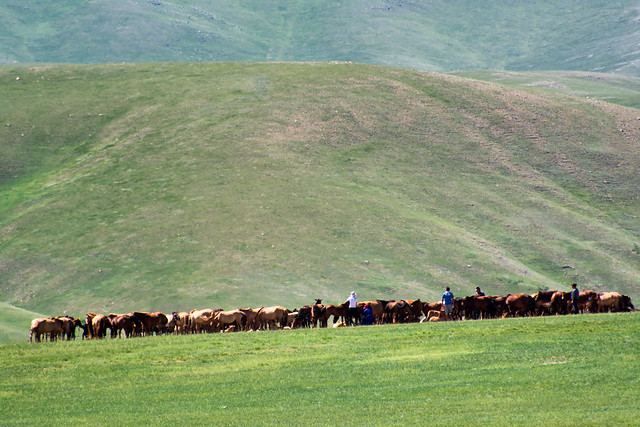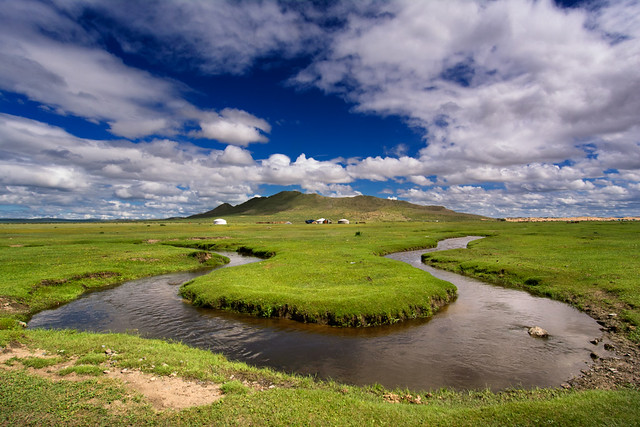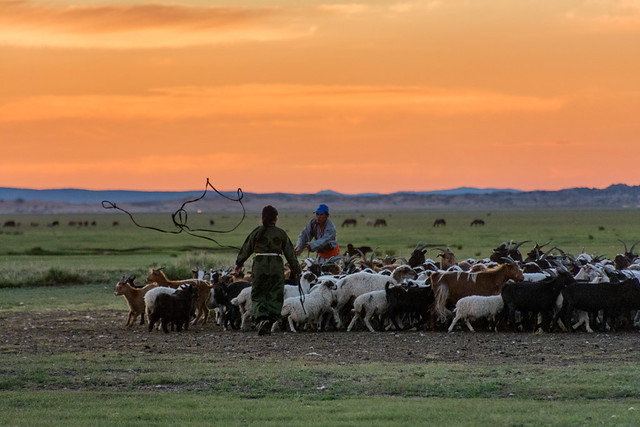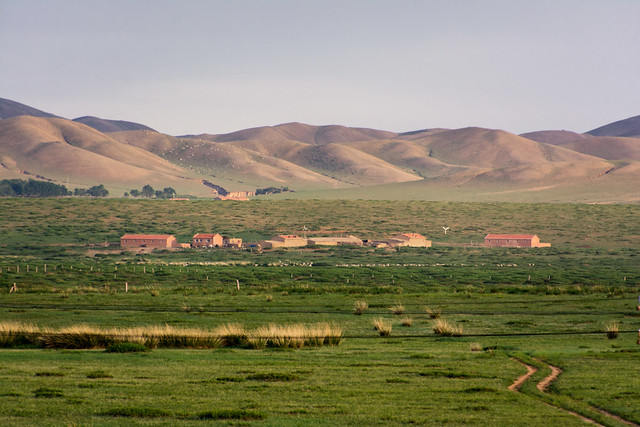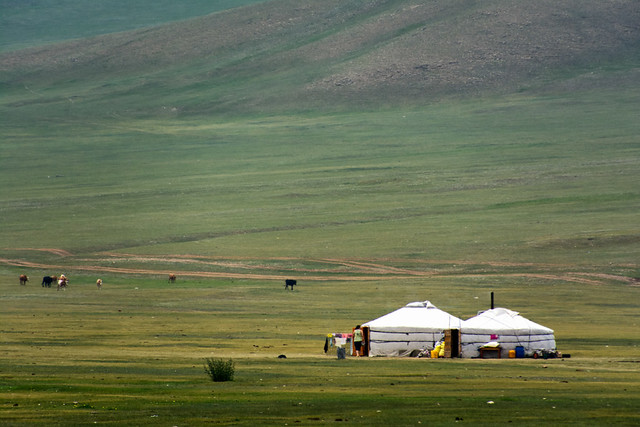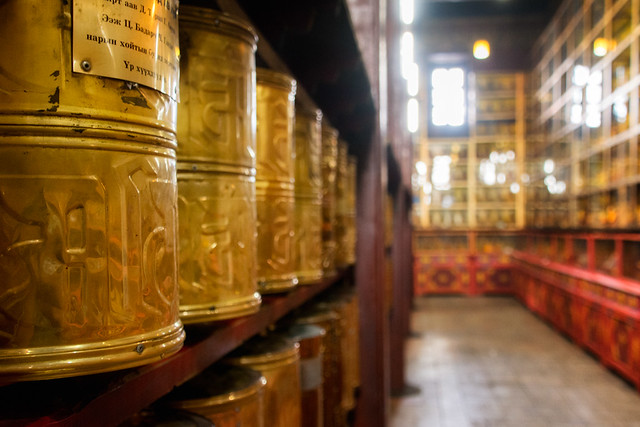Arkhangai to Khövsgöl Aimag, Mongolia
July 2016
I’m leaving central Mongolia for the far north. It’s a couple of days bouncing on the now more than familiar hummocky tracks that serve as roads here. Along the way I transfer to another van, this time a Soviet era all terrain beast that’s got less butt pounding but more airborne action.
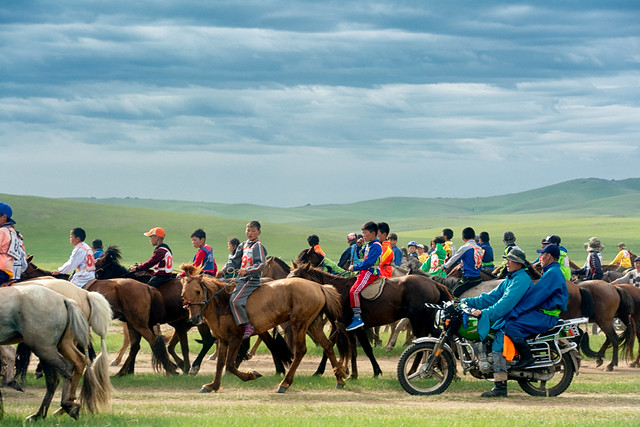
We pass a horse race in the middle of nowhere, part of the annual nationwide Naadam Festival. Kids line up on full sized horses and take off across the grassy moutainsides, surrounded by more horses and motorbikes, and disappear over the next hill.

The landscape is empty here, even for Mongolian standards. Towards the end of the day, we pull up to a random nomadic family, the driver asks if there’s space to stay in their tent. Discussions are had, I’m guessing a price is suggested, driver looks disinterested and begins to drive 50 metres then pretends to make a phone call (the chances of cell coverage in these parts is nil). The owner arrives at the window, the process repeats again, this time we drive only 20 metres. Eventually they send the young daughter out with an acceptable price and it’s all on.
The traditional greetings come out, offerings of horse milk tea, dried yoghurt and snuff. Outside there’s a glorious sunset throwing long shadows across the wide valley.
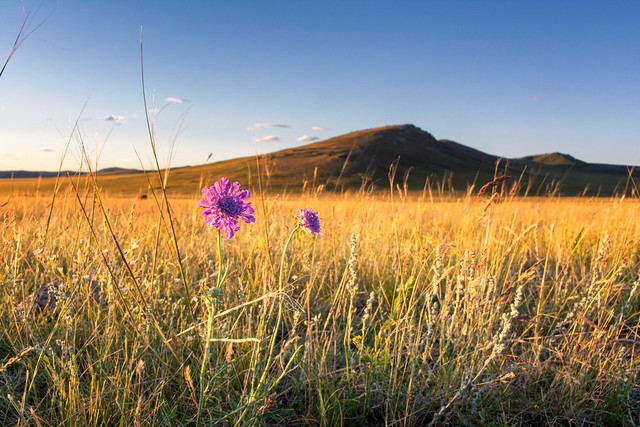
Inside, the TV comes on. They use small solar panels to charge a car battery into which they plug a satellite receiver and small computer monitor. It’s a set-up duplicated in tents across the steppes. We’re entertained with some Mongolian historical movie to do with a wrestling competition and the hero trying to win the most beautiful girl in town by winning the tournament. Quality action.

Breakfast time and we’re given a clear liquid which turns out to be vodka made from fermented horse milk then distilled over the fire place. Apparently finishing your glass means you want more. It took me a few to work that out. Turns out to be a good remedy for the Mongolian roads. Breakfast of champions.
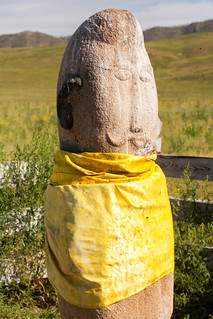 The “road” north heads through more mountainous country, over some semi alpine passes and across a huge river flowing north into Russia and the mighty Baikal. We find an old shamanistic stone totem out in a valley, draped in Buddhist prayer flags and bits of yak hair for blessings on the herd. This practice dates back millenia.
The “road” north heads through more mountainous country, over some semi alpine passes and across a huge river flowing north into Russia and the mighty Baikal. We find an old shamanistic stone totem out in a valley, draped in Buddhist prayer flags and bits of yak hair for blessings on the herd. This practice dates back millenia.
Lunch is by a distinctly aromatic soda lake that smells as if the yaks have been using it for a bath. There’s no outlet, presumably only evaporation and seepage drain this, the shore is covered in a thick crust of mineral salt, the water has that weird oily feel of super-saline lakes anywhere.

We arrive in the brightly painted and mildly amusingly named town of Moron (amusing until you find out it’s pronounced mooroon), just in time for a massive thunderstorm, stay the night and swap to another Soviet van for another 12 hour bronco session.

The landscape, nature and culture change up here. There are high mountains around, more forest which slowly morphs into Siberian Taiga carpeted by deep moss. There are less nomadic tents and more log cabins spread around, some in small clearings in the forest, others out on the grassy valleys by lazy silver rivers and lakes, thin snakes of smoke trailing above from the fires within.


The long twilight works for us, it’s almost 11pm by the time we reach our destination – a small log cabin up a mountainous valley. Inside is a single room in which the whole family sleep, a wood stove set in the middle. As always, they’re incredibly friendly and hospitable. Milk tea, home made cream cheese on fresh bread, mutton soup and fresh made yoghurt come out. Superb.
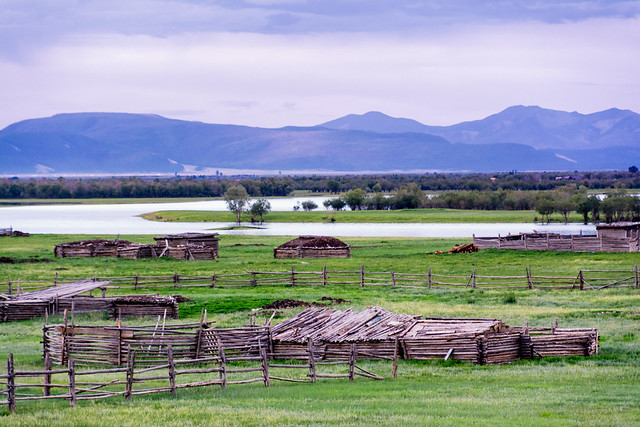
Hore trek adventure into the far north awaits the next day …















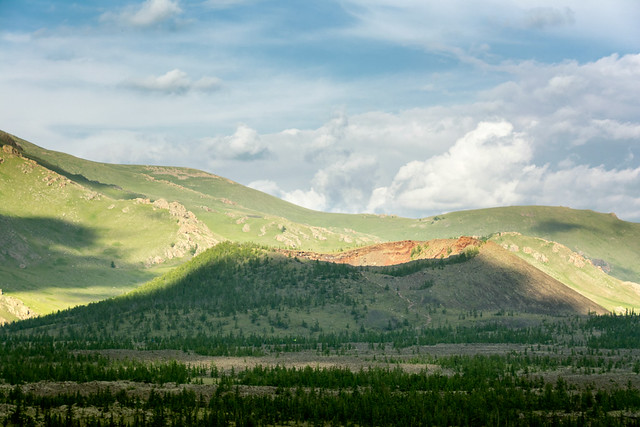




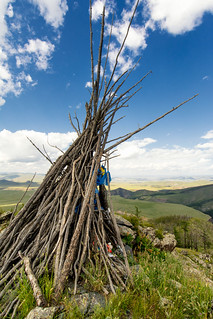 Up on top of the mountain is a shamanistic shrine where people have left offerings. There is a plague of flies in the forest here, I wonder how people live with it without going insane as I feel myself rapidly approaching that point with them in only a couple of short hours.
Up on top of the mountain is a shamanistic shrine where people have left offerings. There is a plague of flies in the forest here, I wonder how people live with it without going insane as I feel myself rapidly approaching that point with them in only a couple of short hours.










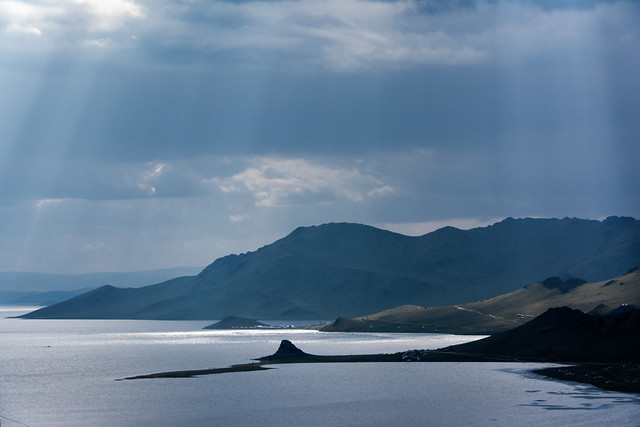

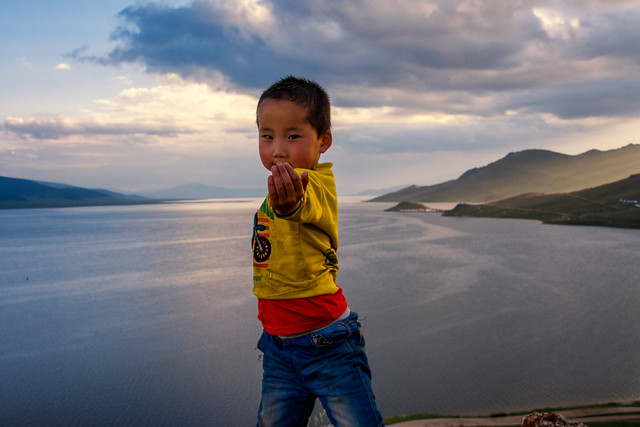










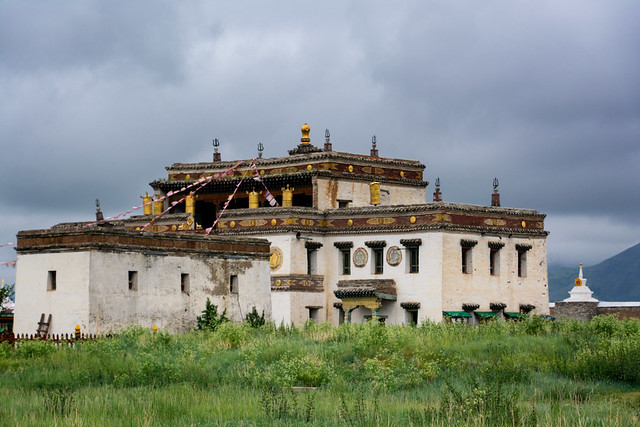









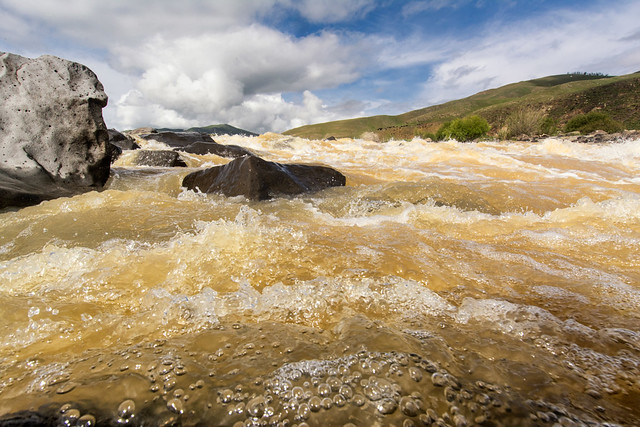


 The goal was to reach the nearby waterfalls, the largest in Mongolia. Not huge by any normal standard but still impressive. Also very popular with Mongolians apparently as well. The water, fortunately full from recent summer rains (it only flows for a few weeks each year) plummets off the edge of a lava flow into a chasm below. Safety standards here are a little more relaxed as people either jump to the small island above the falls with their kids in tow, and clamber down the sheer cliff single handed (the other hand carrying children too small to walk). I see parents waving their small children over the waterfall, considered good luck seemingly – presumably for those that are successfully retrieved to relative safety.
The goal was to reach the nearby waterfalls, the largest in Mongolia. Not huge by any normal standard but still impressive. Also very popular with Mongolians apparently as well. The water, fortunately full from recent summer rains (it only flows for a few weeks each year) plummets off the edge of a lava flow into a chasm below. Safety standards here are a little more relaxed as people either jump to the small island above the falls with their kids in tow, and clamber down the sheer cliff single handed (the other hand carrying children too small to walk). I see parents waving their small children over the waterfall, considered good luck seemingly – presumably for those that are successfully retrieved to relative safety.











